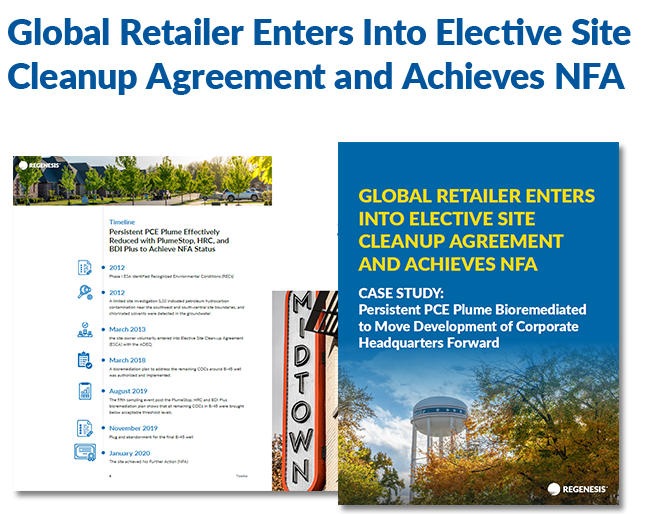This case study reviews the site of a global retailer based in Arkansas, where historic offsite dry cleaning operations caused tetrachloroethylene (PCE) contamination in the groundwater. After applications of PlumeStop, HRC, and BDI Plus, all COCs were below the acceptable threshold levels, and as a result the site achieved No Further Action (NFA) in January of 2020.
Case study highlights:
- PlumeStop, HRC, and BDI Plus successfully remediated persistent PCE, VC, and Cis-1,2-DCE contamination.
- Environmental services firm ESGI and REGENESIS adapted the injection design according to the difficult site geology and weather conditions.
- After one round of injections, successful results led to the site achieving NFA.
A previous bioremediation attempt successfully remediated a majority of the site but one persistent well remained. In order to achieve site closure, ESGI had to continue quarterly monitoring until sufficient data existed to conclude that there was no potential for offsite migration of PCE above the acceptable groundwater screening levels. After time passed with little change to the B-45 well, ESGI sought out a bioremediation strategy that would work quickly with long term success. ESGI partnered with REGENESIS to design a bioremediation plan that would apply PlumeStop®, Liquid activated Carbon, Hydrogen Release Compound® (HRC) and Bio-Dechlor Inoculum® (BDI Plus) to eliminate the remaining contaminants of concern (COCs).
To learn more about Environmental Services Group, Inc., visit their website here. To learn more about the consultant on the project, Tim McDonald, view our client spotlight here.


